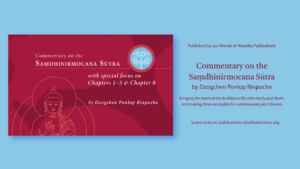The footprint of the elephant is the largest of all living animals of this time. Likewise, the thought of impermanence is the biggest imprint that we can make on our mind, with the most profound impact.
— Buddha
My grandfather died when I was twelve. This was shortly after the death of our beloved family dog, Olaf. Both of them were there one day, and the next day they were not. I remember intimate moments of talking about these deaths with my parents, and the funerals. Looking back, I also notice the dawning understanding that everyone shares in the experience of death.
Like the elephant’s footprint, contemplating impermanence makes the deepest impact on our mind. Acknowledging that everything eventually ends can affect the way we live today. There are infinite examples of impermanence: momentary changes, life stages, and, ultimately, death.
Impermanence, including death, is natural, inevitable, and universal. It’s like the phases of the moon. The rising and lowering of tides. The changing of the seasons. All of the cycles of birth, aging, sickness, death, and rebirth that define the human condition. In both small and large aspects, impermanence is the way of the world.
When contemplating death using analytical meditation, the Buddhist teachers suggest focusing on two main things: death is certain, and the time, place, and circumstances of it are uncertain. Since we never know how much time we have left, we can use impermanence as a potent motivator to practice, now, and take advantage of the opportunity in this moment.
We don’t have to be afraid of death, or resentful. We have everything to gain from accepting the truth of change and relaxing into it. That is good news: we can change. We can reflect on our past, observe our present, and make choices about our future. We can give ourselves the gift of practicing the Buddhist path.
Second, the whole world and its inhabitants are impermanent.
In particular, the life of beings is like a bubble.
Death comes without warning, this body will be a corpse.
At that time, the dharma will be my only help. I must practice with exertion.
Contemplation Exercise
- To start an analytical meditation session, find a quiet space, and set your intention.
- Do a few minutes of calm abiding meditation, and then slowly recite the verse.
- Engage your thinking mind with curiosity and creativity. Go beyond the words to experience the meaning that they convey. Allow yourself to deeply feel what they mean to you.
- During the session, you can periodically repeat the verse to refresh your thinking.
- Conclude with a few minutes of calm abiding meditation, and offer any goodness from the session to all beings.

Nick Vail is a Karunika (teacher) for Nalandabodhi who lives in Maine.
A single parent, he enjoys quality time with his son, being in nature, playing the guitar, singing, dancing, and meditation.






